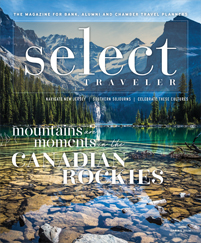Looking at art hanging on the wall of a gallery is one thing. Making your own art is something entirely different.
“I think it can be a really meaningful way to put art in context after viewing a lot of art and then having the opportunity to make their own,” said Erin Dorn, education and community associate for the Crocker Art Museum in Sacramento, California. “You gain a whole new understanding of what artists go through when they create these works.”
Dorn added, “It gives you a chance to get your hands dirty and bring you closer to what you see on the wall.”
That’s why many museums and art centers now offer more than group tours; they give visitors a chance to make their own art pieces and experience art in a new way.
d’Art Center
Norfolk, Virginia
What makes the d’Art Center in Norfolk, Virginia, different from other art museums is that “we are a living art center,” said executive director Jennifer Palestrant.
“I have 32 artists in 28 studios and four galleries, and they’re here full time,” she said. “That’s what makes it really cool for visitors. You can come meet the artists, interact with them, see what they have going on, talk with them, learn from them; it’s an amazing, dynamic environment.”
Opened in 1986, d’Art has rotating exhibits that feature in-house artists, artists from the mid-Atlantic region and artists working with all sorts of mediums: glass, ceramic, fiber and paint, both traditional and abstract, to name a few. The center rotates gallery exhibits once a month.
“We try to have a good mix of mediums here,” Palestrant said, “and everybody is different in terms of what they like.”
Crowd favorites during group tours often include the in-house lamp-work glass artist — because “everybody loves fire,” she said — and the fiber art studio.
Palestrant said the d’Art has a huge variation in what it provides for groups. Visits typically start with a guided tour that includes the opportunity to meet and talk with artists and view the galleries. From there, groups can sign up for a themed art class or workshop, which d’Art staff will customize.
Hands-on experiences can be fun and silly such as Bedazzling Your Badge, which gives conference badge-holders something to talk about, or they can be workshops that are more serious, like a painting class that includes guidance from a teacher. One group decoupaged candleholders, and another incorporated mermaids into their artwork because it tied into their organization.
Workshops start with about eight people and max out at about 25, although the center will bring in extra teachers to work with larger groups.
Banana Factory
Bethlehem, Pennsylvania
There’s more to the Banana Factory’s name than quirkiness. The center in Bethlehem, Pennsylvania, got its start in 1996 when efforts launched to help revitalize the city and to create an arts and education center for the community’s youth.
In 1996, community organizers and local philanthropists bought a former banana distribution warehouse in Bethlehem’s SouthSide neighborhood. The property was renovated and restored, and the Banana Factory opened in 1998.
More than 30 resident artists work from the factory’s studios, and the center is open to the public seven days a week. Although the Banana Factory offers guided group tours, “people are welcome to come in any time to look through the gallery space and peek in artists’ studios,” said Elizabeth Wiggins, visual arts and education coordinator for ArtsQuest, the nonprofit that owns the Banana Factory.
“It’s a community art center, so we really invite the community to come in and take a look,” she said.
The Banana Factory also offers groups a range of hands-on art opportunities, such as learning about digital photography and marbling silk scarves. By far, the most popular workshop for groups is the hot-glass class, Wiggins said.
“People always love the glass,” she said. “Glass is always the big thing that people are attracted to.”
Groups of 12 to 20 people get into the center’s glass studio and, with guidance, make their own pieces, such as flower or pumpkin paperweights. Visitors can take their pieces home after they’ve safely cooled down in the kiln. For groups of up to 50 people, the Banana Factory also offers hot-glass demonstrations that aren’t hands-on but are still immersive.









